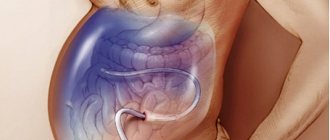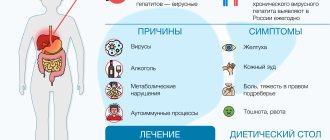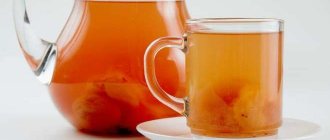Numerous patients are interested in the question of how many people live with chronic pancreatitis without following a diet, and what are the statistics on life expectancy from the moment of illness? It is impossible to answer this question unequivocally, since it depends not only on adherence to the diet.
With pancreatitis, an inflammatory process of the pancreas occurs, due to which its tissues are destroyed, and they are replaced by fibrous scars. The key cause of the disease is chronic alcoholism and unbalanced nutrition. Even if the patient decides to start leading a healthy lifestyle, the process will be difficult to stop.
How does chronic pancreatitis begin?
When the first attack of pancreatitis, an inflammatory process in the pancreas, appears, it belongs to the acute category. In his therapy, it is quite important to correctly organize the treatment. In case of acute pancreatitis, it is better to go to the hospital, carry out extensive diagnostics and complex therapy. The majority of all deaths occur in this phase.
The disease manifests itself and develops quite rapidly and rapidly. Timely initiation of therapy is effective; after all medicinal measures, there is hope that it will be possible to say goodbye to pancreatitis for good. In this phase, the matter of the glands is still amenable to renewal. The organ calms down and begins to function as before.
However, if after a certain time the exacerbation occurs again, this means that the inflammatory process was smoldering in the pancreas and, under positive conditions, made itself felt. Thus, a stratification of the chronic form of pancreatitis has occurred, the effect of which differs from the acute form of the disease.
No matter how the patient tries to get rid of the chronic form of pancreatitis, efforts to achieve a complete cure will be in vain, since it provokes diffuse changes in the tissues of the organ, which can no longer be restored. Life expectancy with chronic pancreatitis depends entirely on the attitude towards the disease, understanding the changes in the gland, and preventing constant exacerbations.
Medical Internet conferences
Chronic pancreatitis is a common disease affecting the working population. If not treated in a timely manner, the disease leads to permanent disability, impairs the quality of life and reduces life expectancy. Operations aimed at eliminating complications of chronic pancreatitis are among the most difficult in abdominal surgery and are accompanied by a significant number of complications [3]. Among general surgical complications, one of the most dangerous and often fatal are thromboembolic complications [6]. Prevention and treatment of thromboembolic complications in surgical patients is still relevant today [1]. Especially with massive intraoperative blood loss, which often accompanies pancreatic surgery. Among the specific complications after operations on the pancreas, the most severe is postoperative pancreatic necrosis and, as a consequence, peritonitis and arrosive bleeding. Determining the treatment tactics for these patients and choosing the optimal option for the upcoming operation is a matter of debate.
The general indication for surgical treatment of chronic pancreatitis is the ineffectiveness of conservative treatment; one of the indications for surgery for chronic pancreatitis is the inability to exclude a malignant tumor of the pancreas [5].
One of the methods that allows achieving good results in the treatment of such patients is surgical treatment. In the surgical treatment of chronic pancreatitis, a wide range of surgical interventions is used, the choice of which is determined by the predominant localization and severity of changes in the pancreatic parenchyma, its ductal system and surrounding anatomical structures. Most publications provide an analysis of the advantages of various methods of surgical treatment in favor of one or another resection or drainage intervention from the standpoint of the effectiveness of eliminating pain, biliary and pancreatic hypertension, and duodenal stenosis [4]. Parenchymal-sparing operations (endoscopic stenting of the pancreatic duct, internal and external drainage of postnecrotic cysts, cystopancreatojejunostomy, longitudinal pancreatojejunostomy) are aimed at eliminating pain, hypertension of the pancreatic ductal system and bile ducts, and compression of adjacent organs. Resection interventions on the pancreas can radically eliminate the complications of chronic pancreatitis caused by fibrocystic degeneration of the head or distal part of the organ (such as resection of the head of the pancreas with longitudinal pancreaticojejunostomy (Frey's operation), Beger's operation, pancreaticoduodenectomy, distal resection of the pancreas) [3] . In addition to operations from the laparotomy access, there are publications on laparoscopic interventions for chronic pancreatitis, however, the duration of these operations is measured in hours, which requires careful selection of patients taking into account the risk assessment associated with prolonged pneumoperitoneum [2]. Against this background, the problem of the negative impact of chronic pancreatitis on the patient’s quality of life remains extremely relevant and little studied. It is known that the nature of the disease and the response to its treatment largely depend on the individual characteristics of the patient, his physiological and emotional state. Currently, there are relatively well-established indications and contraindications for the choice of resection or parenchyma-preserving operations, but there is still little work concerning the assessment of quality of life indicators after these interventions.
Purpose of the study.
A comparative study of quality of life indicators in patients with chronic pancreatitis before and after various types of surgical treatment using the scale of the general questionnaire for assessing the quality of life SF 36.
Research objectives.
1) To study the long-term results of surgical treatment of patients with chronic pancreatitis.
2) Assess the effectiveness of surgical treatment of chronic pancreatitis based on studying indicators of the quality of life of patients at various times after surgery using the SF 36 questionnaire.
3) Compare indicators of the quality of life of patients after different types of operations.
4) Compare the level of quality of life of patients in the postoperative period with their psychological health.
Phenomena under study.
Parameters of the quality of life of patients with chronic pancreatitis, which, along with conventional methods of studying the disease, provide important information about the impact of the disease on the psychosomatic and emotional state of the patient before and after surgical treatment.
Materials and methods of research.
The results of treatment of 15 patients over the past 8 years were analyzed. The study was conducted at the Clinic of Faculty Surgery and Oncology of the Saratov State Medical University. The study included patients with chronic pancreatitis who underwent surgical treatment. Age from 33 to 64 years. Pain syndrome was present in all 15 patients (100%), dilation of the Wirsung duct in 10 patients (66%), pancreatic cysts in 8 patients (54%), and Wirsungolithiasis in 7 patients (46%).
Table 1.
Expected results: an adequate choice of method of surgical treatment of chronic pancreatitis should help improve the quality of life of patients. The majority were patients of working age 30-60 years (93.7%), almost equally women (46.7%) and men (53 .3%).
Results.
Resection interventions were performed in 7 patients, including 1 pancreaticoduodenectomy and 6 Frey operations. Pancreaticoduodenectomy was performed on a patient with pancreatic cystadenoma measuring 9 cm; after the operation, the quality of life improved, the patient feels better, the symptoms of pancreatitis are not bothersome, the physical component (80) is approaching the maximum, the psychological component (61) is above average, despite the amount of surgery performed surgery and the presence of complications such as postoperative pancreatic necrosis, arrosive bleeding.
Table 2.
Resection of the head of the pancreas with longitudinal pancreatojejunostomy (Frey's operation) was performed for fibrous transformation of the head of the pancreas, pancreatic hypertension caused by calculosis of the pancreatic duct. Performed in 6 (40%) patients.
Table 3.
Drainage (parenchyma-preserving) operations were performed on 8 patients, including 4 pancreaticojejunostomies, 3 cystoenterostomies and 1 puncture and drainage of a pancreatic cyst under ultrasound guidance. Pancreatojejunostomy was performed in the presence of ductal hypertension and dilation of the main pancreatic duct due to its strictures or stones at the level of the isthmus, body and tail of the pancreas and the absence of fibrous degeneration of the head and uncinate process of the pancreas. It was performed in 4 patients who had a combination of symptoms such as: dilation of the Wirsung duct containing small stones in the structure.
Table 4.
Cystoenterostomy was performed in 3 patients whose indications were cyst sizes from 5 to 14 cm and persistent pain. The quality of life of patients is good, both physical (97) and psychological components (82) of health are approaching maximum levels. Of all the operations performed, the results after this operation are the highest.
Table 5.
According to a number of authors [7], external drainage of cysts is resorted to only in patients with suppurating cysts with unformed walls and full confidence in the non-tumor nature of the cysts, the absence of communication between their cavities and the main pancreatic duct. For a successful outcome of external drainage of cysts, adequate and reliable drainage using double-lumen drainages is important . It was performed on 1 patient with a pancreatic cyst measuring up to 14 cm.
Table 6.
Conclusion. 1) Respondents had above-average quality of life indicators after all operations performed on the physical and role functioning scales; pain syndrome did not have a significant impact on quality of life. Patients after cystoenterostomy and drainage of a pancreatic cyst have the highest quality of life indicators. Conclusion:
2) The general state of health was rated above average for all respondents, regardless of gender, age, or operations performed. Maximum indicators of general health were higher, again with cystoenterostomy.
3) Mental health is also above average, but inferior in terms of physical health.
4) The quality of life of patients with chronic pancreatitis in the long-term period after parenchyma-preserving operations is better in comparison with resection-type surgical interventions.
Conclusions: In case of chronic pancreatitis, which is not amenable to conservative treatment and in its complicated forms, it is necessary to perform one or another surgical intervention. Depending on the indications and contraindications, patients undergo either parenchymal-preserving or resection surgery on the pancreas. After any operations performed, the quality of life of patients is better than before surgical treatment. If we compare the quality of life of patients after parenchyma-preserving operations and resection, then after the former, quality of life indicators are higher, which can be explained by less surgical trauma, fewer early and late postoperative complications that reduce the quality of life of patients.
Types of pancreatitis
There are 2 types of the disease:
- Acute;
- Chronic.
Acute pancreatitis appears for the first time. The inflammation lasts for a short period and affects parenchyma cells, which are ultimately damaged by activated enzymes.
There are the following types of acute form:
- Interstitial.
- Pancreatic necrosis.
- Hemorrhagic.
- Purulent.
The chronic form of pancreatitis appears after numerous repetitions of the acute disease, but with initial changes there are often no signs. Pancreatitis bothers patients for quite a long period, due to which part of the parenchyma is replaced by scars, and its surface becomes damaged.
There are the following forms of chronic pancreatitis:
- Alcoholic.
- Idiopathic.
- Biliary.
- Ischemic.
- Toxic.
- Infectious.
Symptoms of pancreatitis
To understand the onset of the formation of the disease, you should know its characteristic symptoms. When pancreatitis develops, a person experiences pain that increases in intensity after eating.
In addition to this, 2 more key signs are formed in the form of vomiting and a feeling of nausea. With a chronic disease, the symptoms will be mild, but the disorder itself continues for quite a long time.
Taking into account the severity of the disease, immune strength and therapy, the specialist is able to approximately determine how long the patient will live. If pain occurs all the time, then this sign indicates the gradual destruction of the materials of the inflamed gland.
In this case, healthy lobes are replaced by connective lobes, complications arise, among which are:
- Peptic ulcer of the digestive system.
- Erosion in the esophagus.
- Organ compaction.
- Inflammation with purulent accumulation.
- Intestinal obstruction.
- The emergence of cancer cells.
- Blood poisoning.
The described difficulties significantly worsen the condition and life expectancy, and the patient himself can die from complications. In addition, patients may experience shock or collapse. With a purulent inflammatory process, a sharp increase in temperature occurs, and the color of the skin often changes.
Patients with pancreatitis may have pale, bluish or yellow skin. It is possible to understand how to live with such a disease only after visiting a specialist and making a diagnosis. As a result of the results and examinations, specialists can identify the diagnostic conclusion, the person’s condition, and choose the right therapy.
How dangerous is chronic pancreatitis and does it affect life expectancy?
Each exacerbation of the disease affects the condition of the organ in the form of a scar. It turns out that glandular tissues are increasingly becoming unsuitable for their intended function due to the replacement of healthy tissues with fibrous growths.
The process occurs slowly, but over a long period of time. During this period of time, cysts, stones, and tumors may appear in the organ. For such diseases, medicinal methods are ineffective. However, as long as they are absent, it is worth continuing therapy. They are aimed at avoiding aggravation. In such cases, the gland will be less injured.
In the treatment of pancreatitis, the main place is occupied by the diet. Every patient with pancreatitis must have a culture of nutrition. The diet is a special balanced diet that relieves stress on the organ.
Factors that can affect life expectancy with pancreatitis:
- Form of the disease. In the acute form of the disorder, the number of deaths is quite large, since a failure occurs not only in the organ itself, but also in other body systems that are unable to cope with activity due to inflammation. As a result, kidney, liver, and heart failure occurs.
- The severity of the violation. The specialist should accurately assess the condition of the inflamed gland, as well as evaluate the effectiveness of therapy, diet and other conditions that are aimed at restoring the activity of the gland.
- Complications . There are several complications that can negatively affect the patient’s life expectancy and well-being. These include infection, intestinal obstruction and bleeding. Similar difficulties can arise from the 2nd week of pancreatitis formation.
- Patient's age. The increase in the percentage of deaths increases in old age and is about 20%. Acute mild disease can cause death in only 2% of patients.
- Therapy . It is quite important that it be correct, timely and effective. To do this, you should initially undergo diagnostics, which will fully confirm the condition of the body. During treatment, a routine check is carried out, which provides an opportunity to evaluate the effectiveness of therapy.
- Compliance by a person with the recommendations of a specialist.
- Nutrition . Diet is one of the key principles for successful therapy and a normal life. It is possible to add only healthy foods and dishes to the menu; all junk food should be excluded.
- Bad habits.
Life with pancreatitis is possible, the disease can be controlled, thereby stopping or slowing down the formation of the disease, and also eliminating possible complications. With a chronic disease, relapses may occur from time to time, which should be quickly blocked.
Material and methods
We studied the long-term results of treatment of 210 of 315 discharged patients who were treated at the NIISP named after. N.V. Sklifosovsky with severe acute pancreatitis for the period from 2003 to 2012. There were 144 (68.6%) men, 66 (31.4%) women. The age of the patients was 54.5±13 years (from 25 to 87 years). The criteria of the 1992 Atlanta classification were used to stratify patients.
All 210 patients with severe pancreatitis underwent complex conservative treatment; in 74 (35.2%) patients it was the only treatment method. In 136 (64.8%) patients, various surgical interventions were used at the stages of treatment. Including only minimally invasive interventions were used in 78 (37.1%) patients: in 24 (11.4%) - percutaneous drainage, in 18 (8.6%) - percutaneous puncture, in 28 (13.3%) - sanitation laparoscopy, in 8 (3.8%) - sanitation laparoscopy combined with the percutaneous puncture method. Open operations were performed in 38 (18.1%) cases. Staged treatment using minimally invasive interventions in the first stage and open interventions in the second stage was used in 20 (9.5%) patients.
Fundamental in the choice of treatment tactics was the presence or absence of infection of foci of pancreatic destruction. An aseptic course was observed in the majority of patients - in 136 (64.8%), an infected course - in 74 (35.2%).
Patients with aseptic destructive complications of pancreatitis, depending on the treatment and tactical approach, were divided into three subgroups: 1A - only conservative treatment, n
=74 (35.2%);
2A - conservative treatment in combination with minimally invasive interventions, n
= 52 (24.8%);
3A - open surgical interventions against the background of conservative treatment, n
= 10 (4.8%).
Patients with infected destructive complications, depending on surgical tactics, were also divided into three subgroups: 1I - only minimally invasive interventions, n
=26 (12.4%);
2I - only open surgical interventions, n
= 28 (13.3%);
3I - combined surgical tactics with minimally invasive interventions at the first stage and open surgical interventions at the second stage, n
= 20 (9.5%).
To study the long-term results of treatment and the quality of life of patients who suffered severe acute pancreatitis, the following methods were used: questionnaire (GIQLI questionnaire [14]), clinical examination, ultrasound and computed tomography of the abdominal organs, MRI, determination of blood glucose levels, C-peptide blood, elastase-1 feces.
Long-term treatment results were studied in periods from 3 to 12 years after severe acute pancreatitis. The average period for analyzing long-term data was 8.5±3 years. In 210 patients, long-term results were assessed using surveys and questionnaires. 80 patients were examined in a hospital setting.
When assessing long-term treatment results, we took into account the frequency of relapses of acute pancreatitis, the presence of exocrine (manifested in the form of dyspeptic disorders) and endocrine (incidence of diabetes mellitus) pancreatic insufficiency, the presence of a postoperative ventral hernia and post-necrotic changes in the pancreas.
Statistical processing of the obtained data was performed using the Statistica for Windows 7.0 software package. Methods of parametric and nonparametric statistics were used. To assess differences in quantitative indicators in different groups, t
-Student's t-test for independent samples or non-parametric
Mann-Whitney
U- Intergroup differences were considered significant at p
<0.05.
How long do people live with chronic pancreatitis?
Life expectancy is often reduced by 10-20 years. This is due to the fact that if the gland is not functioning properly, the body cannot cope with the additional load.
According to statistics, with an acute and severe form of the disease, death occurs in 30% of cases. In 15% of patients, recovery occurs, and the remaining ones face a relapse of the disease. A patient with mild chronic pancreatitis, with proper treatment, can live as long as a healthy person.
How long can you live with pancreatitis without following a diet?
If the patient leads a healthy lifestyle and refuses to drink alcohol, then he will live 80% of the first 10 years. If the patient does not follow the specialist’s recommendations, ignores dietary nutrition and does not free himself from bad habits, then the average life expectancy will be reduced by 2 times.
Quality of life of patients with pancreatitis
When pancreatitis is detected, its therapy begins. The acute form of pancreatitis will remain “behind the scenes”. Let's consider the chronic course of the disease. There are many common actions in the treatment of any pancreatitis.
In curing a disease, there is always a set of measures that effectively influence its eradication:
- Medicines;
- Dietary ration;
- Support and stimulation of the immune system.
Medicines, by their own influence, are aimed at reducing pancreatic secretion.
Conservative treatment includes:
- Antispasmodics.
- Anti-inflammatory drugs.
- Analgesics.
- H2 blockers.
- Pancreatic enzymes.
Hazardous factors
To increase life expectancy, it is necessary to get rid of dangerous conditions that lead to exacerbation of pancreatitis and complications.
These include:
- Alcohol. Drinking alcohol is considered the most common cause of inflammation of the pancreas. The organ lacks enzymes capable of breaking down ethanol, and when alcohol penetrates, an inflammatory process gradually begins. An identical requirement applies to cigarettes.
- Diseases of the digestive system. Any disorders of the gastrointestinal tract can provoke the occurrence of pancreatitis.
- Infection of the gland.
- Hereditary predisposition.
- Anomalies from birth.
- Incorrect intake of medications.
- Unbalanced diet.
- Constant stressful situations.
- Sedentary lifestyle.
If these causes are eliminated, the life span increases significantly, and in addition, the likelihood of developing a chronic form of pancreatitis decreases.
Causes
The development of acute pancreatitis can be associated with infectious and non-infectious factors. The disease can occur against the background of a viral infection. In particular, the risks of inflammatory damage to the pancreas increase with tuberculosis, measles, and hepatitis.
Common non-infectious causes of acute pancreatitis are alcohol abuse and poor diet. Provoking factors include fatty and spicy foods, as well as overeating in general. In addition, the disease often occurs when taking medications that have a toxic effect on the digestive system.
Other causes of survivable acute pancreatitis include the following:
- Gallstone disease.
- Inflammatory processes in the digestive system.
- Surgeries on the pancreas or other organs located next to it.
Cause of mortality in pancreatitis
The disease is characterized by severity and an increased risk of death. What is the danger of such a condition and for what reason does the patient die, we consider further.
Pancreatic necrosis
Pancreatic necrosis is a complication when lobes or the entire pancreas die. The key reason for this condition is damage to the gland by its enzymes and the appearance of inflammation. Provoking conditions are considered to be alcohol abuse, calculous cholecystitis, trauma to the peritoneum and previous operations.
Pancreatic necrosis is characterized by far from increased survival: in 40-70% of situations the patient’s death occurs. If treatment is provided on time, the rate increases significantly.
Pancreas cancer
It is determined by its aggressive course and rapid spread throughout the body. In most situations it leads to death. If oncology was detected in the initial stages, when the tumor is still operable, then an operation is performed in which the gland or its diseased portion is completely removed. The causes of cancer are often considered to be: smoking, unbalanced diet, excessive consumption of alcoholic beverages, and pathologies of digestive function. Hereditary conditions.
Mortality after surgery
Glandular surgery varies in complexity and has an increased mortality rate. Removing the gland is fraught with difficulties, since it is located next to large vessels, kidneys and shares blood flow with the duodenum. Highly active enzymes often digest parenchymal matter, and it is quite difficult to suture it.
The patient will need to adhere to bed rest, being in a supine position for a long time. All this can cause complications in the period after surgery, which increases the risk of death. If the surgical intervention is successful, the patient faces a long road of rehabilitation.
“I ate and drank non-stop”
What do all-inclusive holidays and pancreatitis have in common?
The pancreas is a small organ weighing only 180 grams, but it can cause unbearable suffering to a person. Why is she “punishing” us? How is pancreatitis treated? And can you trust advertisements for anti-overeating medications?
Word from the head of the abdominal department of the National Medical Research Center for Surgery named after. A.V. Vishnevsky, Doctor of Medical Sciences, Professor, laureate of awards from the governments of Russia and Moscow Andrei Germanovich Krieger.
— Andrey Germanovich, what role does the pancreas play in the body?
— The pancreas (PG) performs two very important functions. It produces insulin, which ensures carbohydrate metabolism in the human body, and produces digestive enzymes that ensure the digestion of everything eaten by a person. When the first function is impaired, diabetes mellitus develops. And as a result of inflammatory changes in the pancreas, its second function is disrupted - the secretion of digestive enzymes, which leads to serious digestive disorders and exhaustion of the person.
— The diagnosis of “pancreatitis” comes in two variants: “chronic” and “acute”. What is the difference between them?
— With chronic pancreatitis, there is a gradual decline in pancreatic function, slow destruction of its tissues and their replacement with rough scars. Chronic pancreatitis lasts for years, periods of exacerbation of the disease alternate with temporary subsidence of pain.
While acute pancreatitis proceeds completely differently - rapidly. In the vast majority of cases, this is a reaction of the gland to some kind of food aggression: either to a large alcohol load, or to a gross error in the diet. The pancreas does not forgive such an insult, its enzymatic activity literally flares up, it begins to digest both itself and the surrounding tissues. This condition develops rapidly, within a few hours, and leads to the most tragic consequences - the development of pancreatic necrosis, a severe condition in which, unfortunately, a person can die, despite all the efforts of doctors.
— Is it true that pancreatitis develops against the background of psychological stress? Today, many diseases are usually attributed to this very reason...
- Not true. Our emotional status has nothing to do with life expectancy. Unless a person tries to cope with stress with alcohol.
— Is the incidence of pancreatitis increasing, or is it stable at all times?
- It's growing. Both chronic and acute.
- In connection with what? Have Russians started eating better or drinking more?
— “Eat better” in this case should be understood in the opposite sense: today, higher incomes and a variety of products in stores allow people to buy and eat without restrictions what is not at all healthy for life: smoked meats, fatty foods, a lot of sweets and spicy foods. And, of course, the increase in morbidity is influenced by high consumption of alcohol, especially low-quality surrogates.
— Let’s clarify, otherwise your words may be taken literally by many: does good cognac or wine not harm the pancreas? Or do you still need to know when to stop, you can get pancreatic necrosis from good alcohol?
- That’s right, everything needs moderation. A classic example: every year during the holiday season we receive patients who have returned from foreign resorts, where they vacationed on an all-inclusive basis. The man ate and drank almost non-stop for two weeks, and his pancreas could not stand it. Or he simply drank well once and ate some exotic, very spicy dish - this is enough for pancreatic necrosis to develop.
That is, one person can drink heavily all his life and not get sick, while for another, a single dose of alcohol is enough to cause acute pancreatitis. Depending on your luck, this is one of the mysteries of the “behavior” of the pancreas.
— How does chronic pancreatitis manifest itself?
— Pancreatitis has specific symptoms, it is difficult to confuse it with something else. Patients complain of girdle pain in the upper abdomen, which most often occurs after diet violations. And since the pancreas is located behind the stomach, adjacent to the back wall of the abdomen right on the spine, the pain often radiates to the back.
But! Osteochondrosis also causes similar pain. This is one of the common masks of chronic pancreatitis, which often misleads both the person himself and the doctor to whom he turned. That is why a diagnosis of “pancreatitis” can only be made on the basis of a whole range of examinations and a number of other factors, including the patient’s attitude towards alcohol. If a person admits that he is addicted to alcohol, and he has girdling pain, then first of all one should think about a disease of the pancreas, and not about osteochondrosis.
— Have there been patients in your practice who either diagnosed themselves with “osteochondrosis” or were poorly examined and treated for a long time for “chondrosis” while the person’s pancreatitis progressed? Or worse, pancreatic cancer?
— Unfortunately, there were many. It’s very bad when people don’t turn to specialists when they get sick. It’s even worse when the doctor makes a mistake in the diagnosis.
- Then let's tell you what the examination algorithm should be if there is a suspicion of pancreatic disease.
— The most important thing: a general blood test and fibrogastroscopy do not have a high diagnostic value for identifying chronic pancreatitis. Only radiation diagnostic methods! The first diagnostic step is ultrasound; this is the most accessible method. Its only “minus” is that, unfortunately, ultrasound is highly operator-dependent, that is, the interpretation of information significantly depends on the professional skills of the specialist performing the study.
If, during an ultrasound examination, the doctor finds manifestations of chronic pancreatitis - stones, post-necrotic cysts, dilatation of the pancreatic duct - in this case, it is imperative to take the next step, undergo a computed tomography or magnetic resonance imaging scan. These examination methods make it possible to absolutely accurately diagnose chronic pancreatitis and determine the presence of its complications.
Finally, the third step - with the results of the examination, the patient must go to the doctor so that he can determine the treatment tactics.
— Go straight to the surgeon? Or first see a gastroenterologist?
- A very correct question. Chronic pancreatitis does not always require surgical treatment. Most people with this diagnosis are observed and treated by a gastroenterologist. If we are talking only about a violation of the digestive function of the gland and minor pain syndrome, the gastroenterologist prescribes a diet and replacement therapy with enzyme preparations, less often - physical therapy. A gastroenterologist can treat such patients for years with good effect.
However, when so-called surgical complications appear - virsungolithiasis or simply stones in the pancreas, post-necrotic cysts, and even more so obstructive jaundice, and all this is accompanied by constant severe pain - no therapeutic measures can no longer have a good effect. In this case, the patient has a direct path to the surgeon.
However, when so-called surgical complications appear - virsungolithiasis or simply stones in the pancreas, post-necrotic cysts, and even more so obstructive jaundice, and all this is accompanied by constant severe pain - no therapeutic measures can no longer have a good effect. In this case, the patient has a direct path to the surgeon.
— Approaches to surgical treatment of pancreatic diseases are changing. Until recently, almost all patients were operated on using the “open” method, but today in a significant proportion of patients it is possible to do without surgery in the usual sense of the word, but to perform endoscopic variants of surgical interventions. What does it look like? In the hands of the surgeon is not a scalpel, but the same flexible endoscope that is used during fibrogastroscopy. The doctor brings the endoscope to the pancreas, and with its help installs stents in the ducts of the gland, thereby restoring their patency. In the same way, you can remove small stones from the gland ducts or puncture a cyst. That is, this is also an operation, but without incisions and stitches.
I would like to emphasize that for a person suffering from pancreatitis, the best option is to be treated in a specialized department.
- What do you mean - specialized?
— This is a department whose main profile is the treatment of pancreatic diseases, both surgical and endoscopic methods. In our professional “pancreatology world” there is a term “protective effect of a high-volume clinic.” It is believed that if a clinic performs 50 major operations on the pancreas for chronic pancreatitis and pancreatic cancer per year, this is a high-volume clinic. If fewer such operations are performed, there is no “protective effect”, that is, experience that ensures good results. For example, in our department more than 100 such operations are performed per year.
But that is not all. In addition to surgeons, the clinic must have competent radiation diagnosticians who, using ultrasound, CT or MRI images, see not only the gross manifestations of pancreatic diseases, but also detect the smallest details of the disease. They are able to distinguish complications of chronic pancreatitis, pancreatic cancer in the image, and distinguish a cystic tumor of the pancreas from a postnecrotic cyst. The patient’s life depends on the accuracy of diagnosis of various pancreatic diseases, because treatment methods can be completely different.
And another important link in a specialized pancreatic surgery clinic is anesthesiologists and resuscitators who can instantly respond to complications during and after pancreatic surgery.
- Why is this so important?
— Surgeries on the pancreas are technically very difficult, not only because of its inconvenient anatomical location. The trouble is that the digestive enzymes it produces work against the patient and the surgeon in the postoperative period. This is the difference between the pancreas and other organs, which behave “accommodating” during and after operations. The pancreas reacts to surgical trauma very violently, worse than to vodka. In response to surgical intervention, pancreatic necrosis may develop in the next few hours after the operation, and nothing can be done about it; it is impossible to completely prevent it, despite the complex of drug prophylaxis that is carried out before the operation. This is a colossal problem for the entire world of pancreatic surgery, which has not yet been solved. The rate of complications after pancreatic surgery, equal to 30-40%, is considered a very good result, which can only be achieved in a specialized center with a very large experience in performing such operations.
— What happens during the operation?
— In case of chronic pancreatitis, we restore the patency of the pancreatic ducts, remove stones and cysts, and perform resection, that is, we remove part of the gland. In case of pancreatic cancer, we perform resection of a significant part of the organ, and in case of advanced tumors, the scope of the operation is very large: we completely remove the pancreas along with the duodenum and part of the jejunum. In this case, the function of the removed gland is replaced for life with medications - enzymes and insulin.
— By the way, about enzyme preparations. Is it absolutely safe to be interested in them or not? The question is not random: television advertising very actively suggests taking a drug after a hearty lunch, which is supposedly “indispensable for the stomach.” What do you think about it?
— You gave a very successful example. I would severely punish those who do this for posting such advertising. In no case should you just take enzyme preparations after overeating, just in case, because the pancreas itself knows how many and which enzymes it needs to secrete! And when you take an enzyme preparation, especially one as low-quality as the one that is advertised, the gland begins to work worse. She is "lazy" because you are trying to replace her function, although this is not required.
Remember: if you do not suffer from chronic pancreatitis, and such medications have not been prescribed to you by your doctor, then you do not need to take enzymes.
— Andrey Germanovich, the most important question is: is it possible to prevent pancreatic diseases?
— Diet and restraint in alcohol consumption are the main preventive measures. There are no others.
How to extend lifespan?
Despite the danger of the disorder, there are methods that can normalize the approximate prognosis and give a person additional years of life.
Prevention and lifestyle
In addition to the use of medications that a specialist prescribes to the patient, it is necessary to follow the principles that prevent the progression of the disease and the risk of complications. By following these recommendations, the patient will prolong his life.
Note! It is required to pay attention not only to physical condition, but also to moral one. Doctors recommend that patients with the disorder change their lifestyle, avoid nervous strain and undergo medical examinations on time.
Despite the positive feedback about the use of traditional medicine, it is still necessary to first consult with a specialist to avoid complications.
It is recommended to follow the following principles:
- Completely remove alcohol, cigarettes and drugs from your life.
- Moderate physical activity.
- The daily routine must include adequate sleep.
- Developing a favorable attitude and resistance to stressful situations.
Diet
Patients at home are able to relieve pain and nausea, reducing the load on the gastrointestinal tract:
- Eliminate fatty, spicy, fried foods from your diet. It is necessary to cook, bake or stew food.
- Frequent meals in small portions. It is preferable to eat food at least 6 times a day, and the amount of one serving should not exceed 250 grams. The break between meals should be 2.5-3 hours.
- The daily amount of carbohydrates should not exceed 300 g, and fats - 70 g. They rarely have a harmful effect on the pancreas.
- Product processing. To reduce the severity of inflammation, doctors recommend eating foods cut into pieces or grated.
- The diet is selected in such a way that it contains an increased amount of protein component. The amount of protein per day should be no more than 150 g.
- Drinking regime. Patients need to use approximately 2 liters of water. Experts advise taking a few sips of water every 30 minutes.
There is a list of prohibited foods that cause increased production of pancreatic juice.
It is highly undesirable to use the following products:
- Fatty meat and fish;
- Conservation;
- Sausages;
- Dairy products with high fat content;
- Caviar;
- Mayonnaise, ketchup and other sauces;
- Beans;
- Some vegetables - tomatoes, cabbage, radishes, sorrel;
- Sour fruits;
- Cereals – barley, corn, millet.
- Sweets.
Bad habits
Alcohol abuse is considered a key cause of the disease and its complications. As a result, a spasm of the ducts appears, stopping the outflow of bile, which causes inflammation. Ethyl alcohol destroys parenchyma cells, leading to scarring on the gland and circulatory pathology. To stay alive, you should stop drinking alcoholic beverages completely.
Smoking also has a destructive effect on the pancreas: addiction causes increased production of enzymes, which, in the absence of food, affect parenchymal tissue. The toxic components found in a cigarette can provoke cancer, diabetes mellitus, and pathologies in the activity of the cardiovascular system, which significantly shortens lifespan.
To live as long as possible, the patient will need to put in a lot of effort: take medications, adhere to a diet and implement all preventive measures for the disease.
Treatment of pancreatitis is a long process
The pancreas is involved in the process of digesting food and breaking down fats, proteins and carbohydrates that we need for life. It is a very “delicate” organ of the digestive tract of any of us.
Disruption of the pancreas can be caused by poor diet (fatty, fried, spicy foods), nervous stress, alcohol intake, genetic changes and hereditary factors, etc.
Inflammation of the pancreas with disruption of its function is called pancreatitis.
There are acute and chronic pancreatitis. Acute is a serious disease that leads to destruction (destruction) of the gland parenchyma and requires complex medical and surgical treatment.
Chronic pancreatitis is a disease with periods of exacerbations and remissions, with the gradual replacement of pancreatic parenchyma by connective tissue.
Manifestations of chronic pancreatitis can be very different. Classically, this disease is accompanied by pain and dyspeptic syndromes, impaired production and secretion of digestive enzymes (exocrine insufficiency). The absence of enzymes (lipase, amylase, protease) leads to disruption of the breakdown of proteins, fats and carbohydrates, which are absorbed in the intestines only in a certain, “prepared” form. If this does not happen, nutrients are not absorbed, weight loss occurs, and in severe cases, hypovitaminosis.
With exacerbation of chronic pancreatitis, pain does not always appear. The disease can manifest itself as bloating and rumbling in the abdomen, nausea, and the appearance of mushy (unformed) stools from 1 to 6-7 or more times a day.
The pain occurs after eating, after 30-60 minutes, can be girdling in nature, radiate to the back, and can be localized in the umbilical region or left/right hypochondrium.
The clinical picture is very varied, so only experienced gastroenterologists and surgeons can make a diagnosis of pancreatitis.
The mandatory standard for examining a patient is:
1) laboratory tests (amylase, lipase, etc.), coprogram, elastase in stool
2) ultrasound examination of the abdominal organs
Additionally, computed tomography, magnetic resonance imaging, and ERCP are used for diagnosis.
Treatment of pancreatitis is a long process and begins with following strict doctor’s recommendations on nutrition and diet.
As the acute period decreases, the diet expands, eliminating the consumption of irritating foods (sour, salty, sweet, fresh baked goods and crackers, fatty, smoked, fried foods, etc.). The consumption of fresh dairy products is also limited. An individual diet and further recommendations on nutrition during periods of remission can only be given by a gastroenterologist (nutritionist) and a surgeon.
Drug treatment in the acute period is carried out in a round-the-clock or day hospital, infusion, antispasmodic, antisecretory therapy, enzymes are prescribed, and in case of severe pain, painkillers are prescribed.
The duration of treatment depends on the individual characteristics of the patient and the severity of the condition (7-10 days), and observation by a gastroenterologist and correction of treatment is required for 1-2 months. after stopping the acute process, as well as treatment 1-2 times a year to maintain a relapse-free period.
In a comfortable, equipped 24-hour and day hospital in our clinic, each patient can receive high-quality medical care, an individual approach and the attention of the best surgeons and gastroenterologists.
Head Department of Surgery, Ph.D., Turkin D.V., gastroenterologist, Ph.D. Grishina I.Yu., head therapeutic department Darsaniya E.A.









